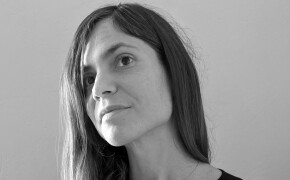The museums enhance the town’s cultural identity and boost its role as a cultural and artistic hub and driver of sustainable development in the region.
Museos de Mequinenza comprises three museum spaces in the town of Mequinenza (Zaragoza): the Mining Museum, the Mequinenza History Museum and the Prehistoric Past Museum. The aim is to raise awareness of the town’s mining and historical heritage and of the Old Town of Mequinenza in particular, which was partially flooded when two dams were built on the River Ebro. The village was located between the two hydroelectric plants and the part that was not flooded was demolished in the 1970s. A completely new village was built a few kilometres from the old one. Museos de Mequinenza also aims to highlight the important artistic legacy of writer Jesús Moncada and the tangible and intangible heritage related to the three rivers flowing nearby. The History Museum is housed in the María Quintana School, which was built in 1927 and was once home to the schools in the Old Town of Mequinenza. The Prehistoric Past Museum, aimed at a younger audience, explores the prehistorical ages in a single space with faithful recreations of archaeological sites such as Los Castellets and Vall Major. Visitors can also see examples of rock art found in Mequinenza, which forms part of the Rock Art of the Mediterranean Basin and has been declared a World Heritage Site by UNESCO. The mining museum, allocated in a real mine, preserves stories of coal mining and showcases the Mequinenza coal basin’s mining heritage, showing visitors how the systems used to extract coal have changed over the centuries.
Resources needed
Three people are employed by the museum: one director and two guides.
The annual budget is €15,000 and is provided by the municipal council.
A total of €2,300,000 was required to set up the museum complex.
Evidence of success
The museums receive 10,000 visitors per year and are part of several museum networks, such as UNESCO's Global Network of Water Museums.
It has become a key point in the cultural offer of the area, transforming part of its controversial past (a submerged town and the abandonment of mining production) into an opportunity for the future linked to heritage. It's also a way to conserve and promote the memory of the village after the dramatic reconstruction.
Potential for learning or transfer
The development of a network of museums to manage the town’s heritage assets and present them in a rigorous, orderly manner with content suitable for all ages has created an important cultural and tourist attraction for the area. The museum also serves as a cultural centre hosting projects related to the history and memory of Mequinenza, as well as contemporary art exhibitions.
The project is closely linked to projects that keep the memory of the ancient town of Mequinenza alive and try to give a positive approach to what happened.
The museum was created with part of the financing corresponding to the funds for the mining reconversion of the area, giving a new opportunity of employment and development of the area towards cultural and turistic services. It combines also the offer of a walking or cycling route known as ‘Camí de Sirga’, where local people used to pull riverboats called ‘llauts’ against the river current using ropes. This circular trail runs parallel to the River Ebro.
Please login to see the expert opinion of this good practice.
Tags: Adaptation strategy, Citizen engagement, Cultural heritage, Heritage, Natural heritage, Water








